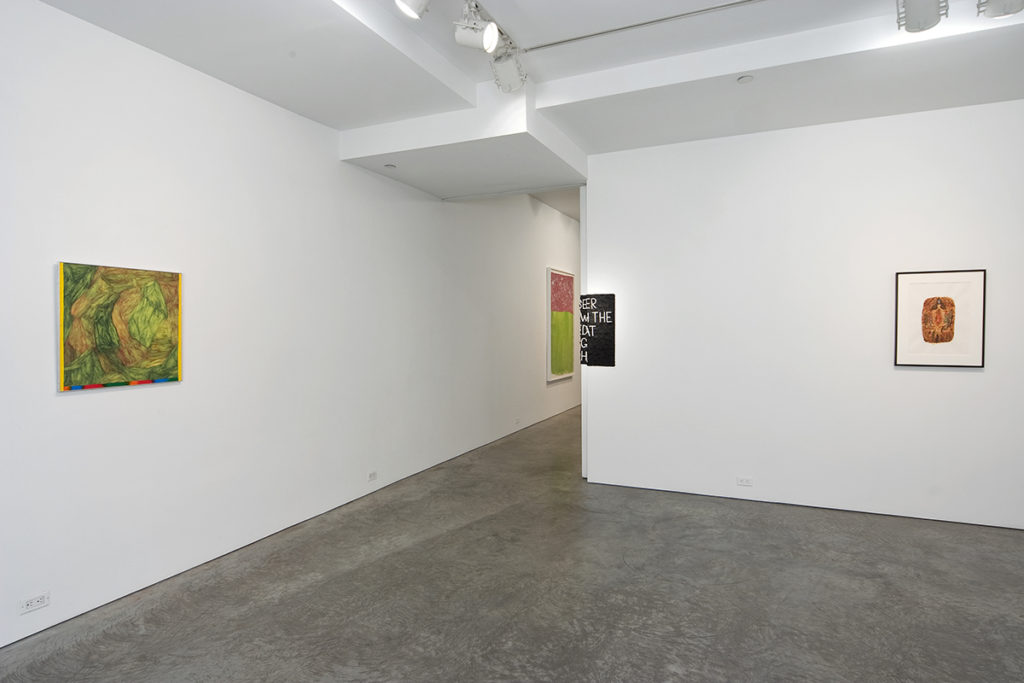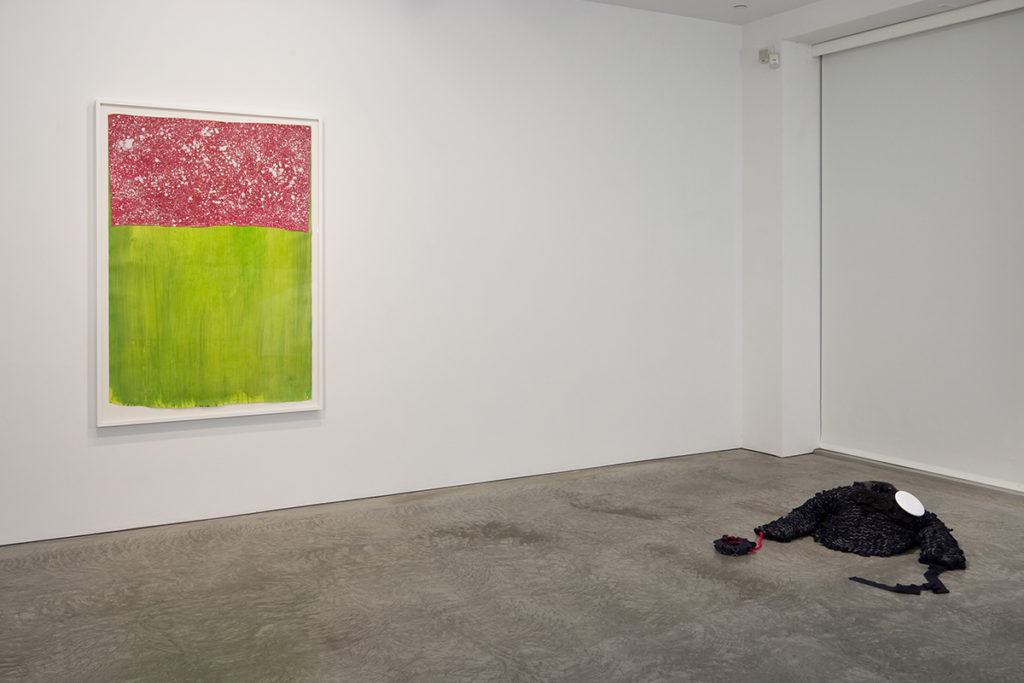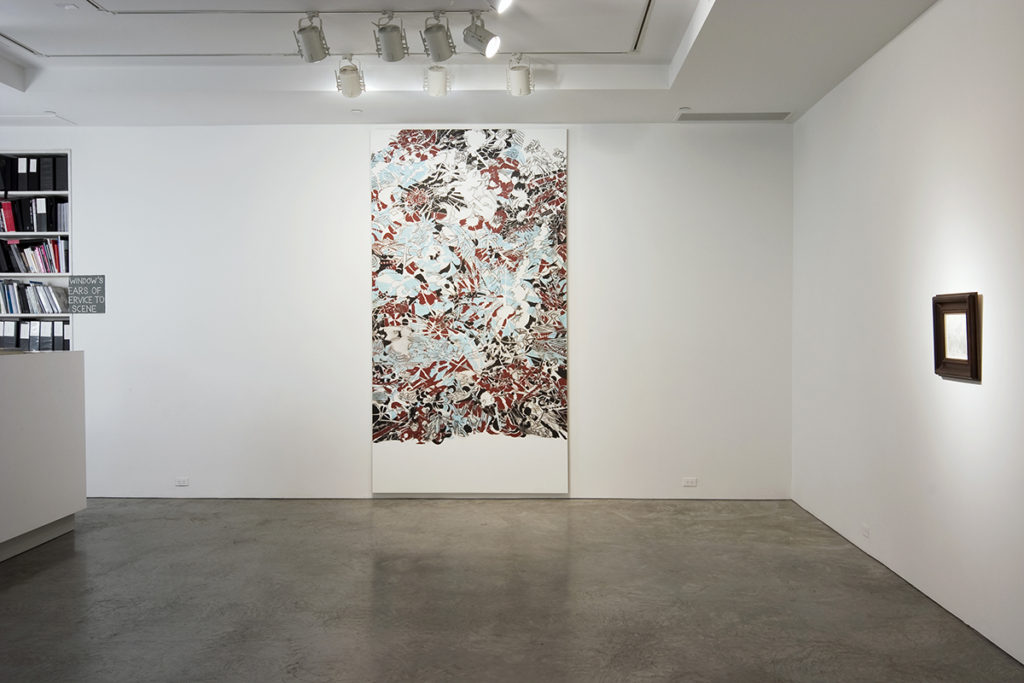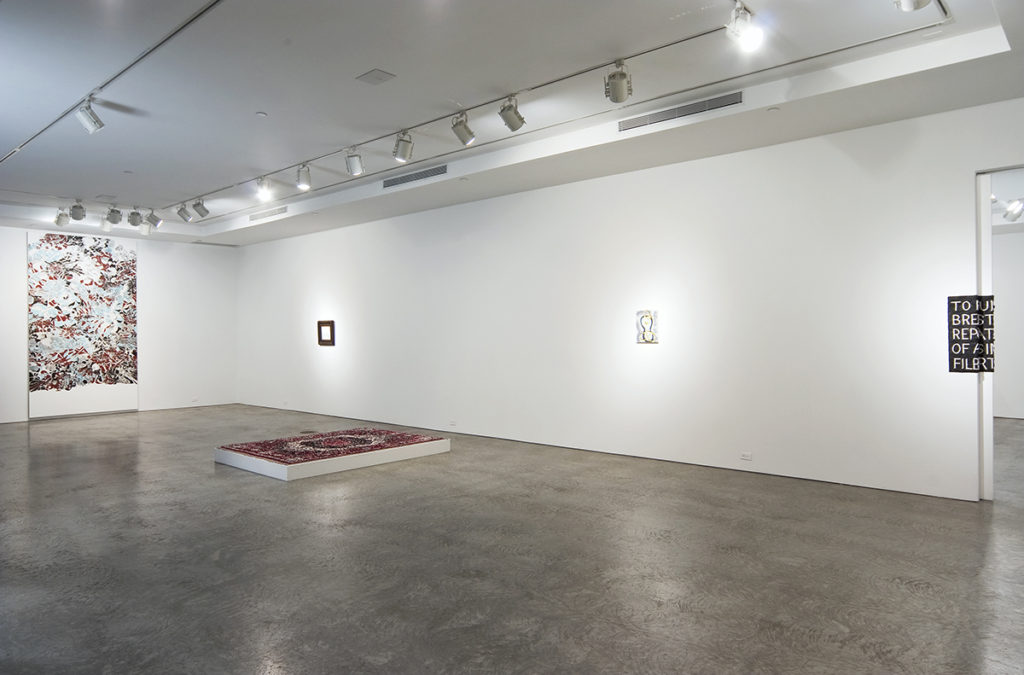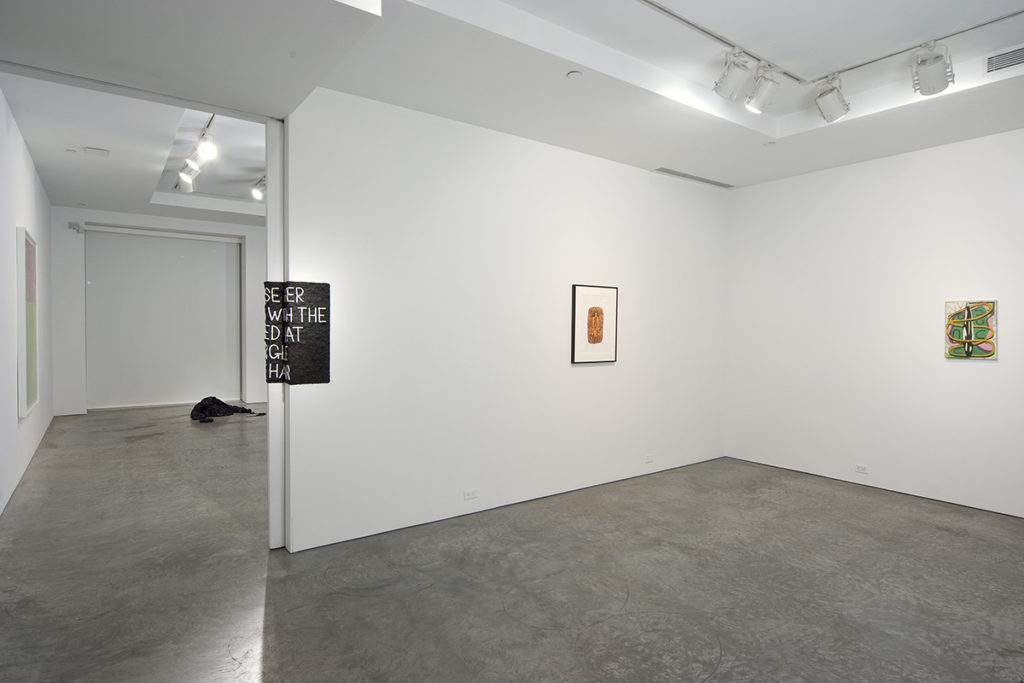Press Release
Leo Koenig, Inc. is pleased to present, “Call the Interruptions Days”, a group exhibition curated by Brandon Lattu. While any over-arching theme would be inappropriate for an exhibition of artists utilizing as disparate a range of methods as in this show, the group as a whole does exhibit tendencies in common. A faith in the decisions made between component signs located in a single work is chosen over a reliance on a single type of image or method that “brands” a signature style. Lattu states “this emphasis on experimentation composed between signs within a single work seems to me to be a means to impact a complexity on individual artworks that has been largely overlooked in the shadow of Warhol, as well as the rise of photography in the artworld. To me it is tied to the demise of a recognized canon, that has accompanied the impulse to quotation in art in post-modernism.” The works do not rely upon a quotation of a pop-culture image to re-site the individual and the activity of art-making, rather they emphasize the mental decisions made composing complicated signs to embed an analog of the complexity of our world. It’s clear from the utilization of methods and references within the works in this exhibition that these are artists who have acknowledged the legacies of minimalism and conceptualism, but the work is clearly energized by the possibilities afforded by the discrete space of the artwork, fluently concatenating the materials, shapes and languages at hand. Construction in painting, sculpture, poetry and weaving is favored over the choice of a proxy image.
Untitled Picture by Jon Pestoni speaks rather directly through varied, hierarchical subject matter. The single piece of depicted information in black and white at the center of the canvas, circled by golden loops and cornered by random bits of alphabet, gives the viewer a compact sense of pictorial space. It is an abstraction whose graphic variables sit extremely close to the surface and provide the viewer with a sense of hyper clarity. The picture’s discovered composition; its unrefined, bumpy surface, mixed with the deliberateness of the subject matter, creates a complex read of representation and abstraction. As a sign the work places the subject of painting in quotations; rife with references. Untitled Picture is an easel painting made without a plan. It’s part old and part new.
Amy Sarkisian’s work is represented in this exhibition by Untitled (rug sculpture), a sculpture woven in the latch-hook method that has the appearance of an oriental rug. Presented on the floor, this sculpture first strikes one as slightly out of focus, or even faintly vibrating. With more scrutiny, one becomes aware that the soft surface is made of yarn far too large to render the minute detail of precious Oriental rugs. Traditionally, this degree of detail displays the abstracted forms that contribute to a rugs narrative, as well as the measure by which the quality of the rug is evaluated. In fact the model for Sarkisian’s sculpture was a range of machine- produced imitation oriental rugs made for the mass market. Through her lower resolution production of the work, Sarkisian has transformed her subject, utilizing the moment of fascination to connect her sculpture through the common mass produced knockoff and back to a wonderfully detailed example of cultural craft production. While it is secondary in the work, one realizes that this piece reverses and revitalizes the turnabout that Carl Andre’s metal floor pieces performed from the handcrafted to the machine produced.
Ruby Neri’s two paintings in this exhibition show a lightness of touch rare in experimental work today. The physicality of the application of paint is distinct in each area of both paintings, structuring the composition with a visual and tactile code that ties the speed, color, form, and coverage of paint to the way that each section is viewed as well. The use of color particularly in the work is cumulative, suggesting a kind of physical joining that could be seen as related to her work in sculpture that is not represented in this exhibition.
David Hughes presents two sculptures, one updated from 2000 and one from 2008. The older sculpture is a linked and woven body with appliqués that sits on the ground like a small landscape. The interplay between the landscape form and the variety of signs produced in the appliqués is elaborate, producing references that range from topical to extremely oblique. The new sculpture consists of acrylic pedestals with two books on top, one of images and one of writings. These are meant to relate to each other by proximity as well as directly by subjects presented within. The respective contents of each book are bodies which encompass narratives and digressions neither of which is specified in any direct manner.
The two drawings by JP Munro: “The Triumph of Death” and “Odin” are works meticulously composed and produced in an ostensibly pre-modern manner. Munro’s work performs a transposition, to make drawings and paintings with a means and imagery from before Manet and Courbet when the canon of western art was not broken by the advent of modernism. There is little doubt that this strategy utilizes some of the re-contextualization of conceptualism, but through an understanding of the works’ reception instead of its making. So Munro’s works become something isolated in time, not truly of then but not reveling in the novelty of now. Nonetheless, they display the myth, violence, fantasy, and ceremony that is the world of today as well as the past.
The works made of black and white clay and poetry in the exhibition are by Jeremy Sigler. An artist that has straddled the poetry and art worlds for the last ten years, Sigler is represented in this exhibition by two works that address pictorial circumstances. In the piece that begins on the large wall in the front room of the gallery, straddles a pull out door in the liminal space of the doorway, and ends in the smaller back gallery; Sigler addresses the gentle hostility of romanticism. The work in the back gallery more overtly uses the ability of words to metonymically produce an absent image and links this image to a passage of time. Both works are linguistically constructed of the base characteristics of language, that is, the basic connotations of syllabic parts instead of a readymade selection of words or phrases.
The 10 foot, 4 inch tall painting in the front gallery is a recent work by Tyler Vlahovich. Inspired by textile design and early modern painters such as Frantisek Kupka, Vlahovich activates the white ground as a separate color and an active participant in the growth of the painting. The works are made in a constant state of decision-making, each mark, each decision is a visible contribution to the variations of form in the field. Significantly Vlahovich does not paint over applied paint, but works off of each decision. The variation of each brush mark strains against the idea of a homogenous field, each producing a discrete composition with surrounding marks.
